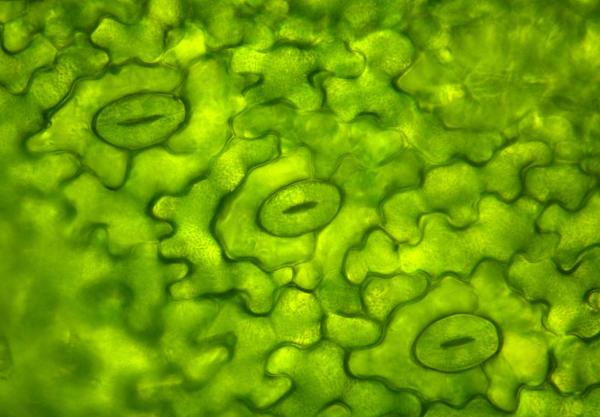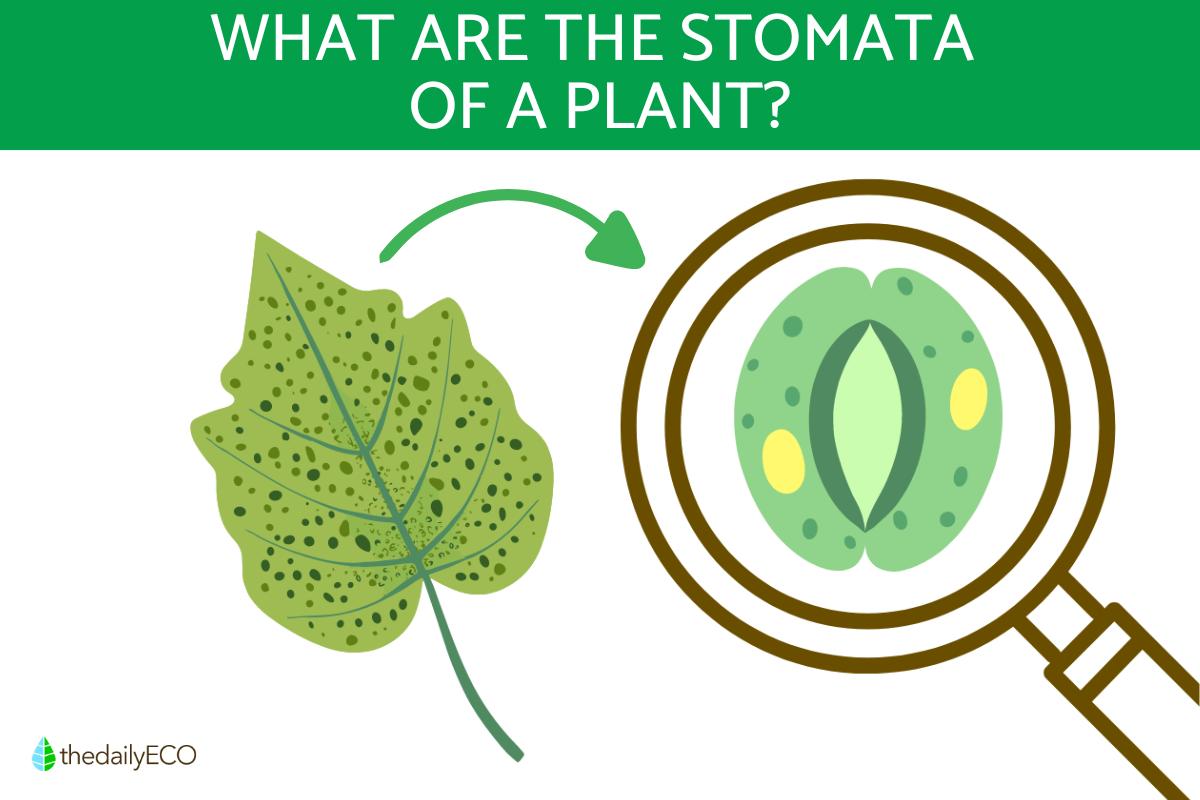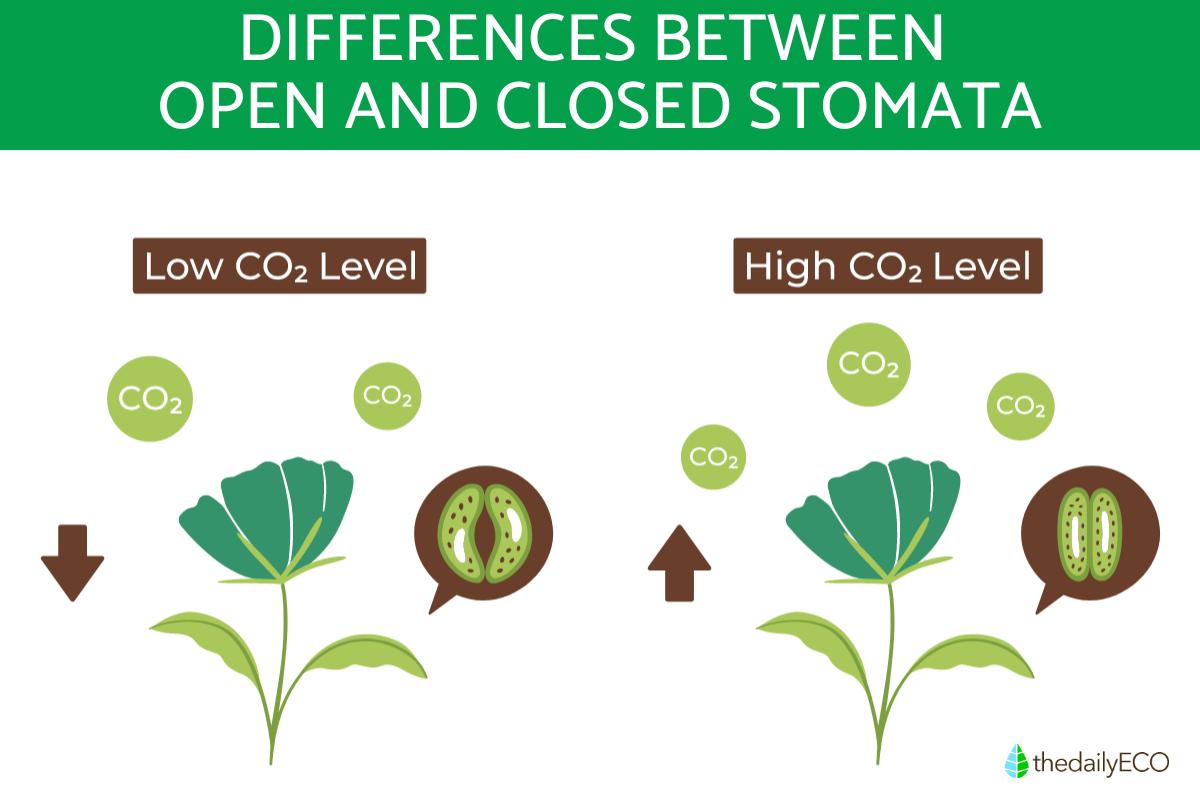What Are the Stomata of a Plant?


We may only think of humans and animals as having organs, but plants also need organs to carry out their various functions. For example, we know our skin has an epidermis, but you may not know that plants have the same organ. If we look closely at this epidermis, we may be able to see tiny pores. These little pores are known as stomata. The function of stomata is essential for the plant as they are necessary for the process of photosynthesis. This process is not only vital for the plant, but it is necessary for the survival of life on planet. This includes our own species.
At thedailyECO, we find out why they are so important by asking what are the stomata of a plant? In answer this question, we provide a definition of stomata and look at their specific function.
What are the stomata of a plant?
Stomata are pores or adjustable openings in the epidermal tissue of plants. They are formed by gate cells, i.e. epidermal cells that cause these pores to open or close. Their name in the singular is stoma, derived from the original Greek which means ‘mouth’. They are found on the leaves, stems and other plant organs. They are alternatively known as a stomate or stomates.
The opening of each stoma is called an ostiole and it communicates with the interior of the substomatal chamber. This is a cavity where the plant's gas exchange processes take place. Adjacent to each occlusive cell, we also find one or two modified epidermal cells that are responsible for opening and closing these stomata.
The stomata also show the cellular interface between the environment and the plant itself. This is because it is believed these appeared when most plants left the aquatic world to colonize land.
Learn about one type of aquatic plant with our article on the definition and function of kelp forests.

Plant stomata function
The main function of stomata is to facilitate gas exchange and promote photosynthesis in plants in doing so. Photosynthesis is the process by which plants transform sunlight into useful energy to grow and live optimally, but it is important not to confuse this conversion with plant respiration.
During this gas exchange process of plants, it is the stomata that take carbon dioxide from the atmosphere and release the oxygen created as a waste product. They do not do this on their own, but without stomata, this process could not occur. Learn more about this process by looking at the different types of chlorophyll.
The stomata are also responsible for carrying out the transpiration process through which the plant gets rid of excess water. It should be noted that this loss of water is something that plants do not control. However, thanks to the stomata, they are capable of regulating the water inside to adapt to the climate that surrounds them.

Opening and closing of stomata
As stated above, there are cells in charge of opening and closing the stomata called occlusive or protective cells. These are responsible for pumping calcium and potassium ions so that each stoma dilates after contracting the cell.
In addition, these cells are in charge of altering the turgor of the cell. This is the force within the cell that pushes the plasma membrane against the cell wall. When turgor is increased by ion flow, the guard cells open to let water in. When turgor is decreased, the stoma closes.
Other factors that directly affect cell turgor are amount of UV light, water vapor and carbon dioxide levels in the environment. In this way, during days with high temperatures, the stomata remain closed to store carbon dioxide. During the first hours of the day when the temperatures are cooler and more pleasant, the stomata open to absorb water vapor from the environment.
Explore more about the world of cellular function by looking at the differences between plant and animal cells.

Types of stomata of a plant
The stomata are classified into two large groups. Below we show you the types of stomata of a plant according to its attached cells, as well as according to its origin and development.
Stomata according to annexed cells
- Anomocytic or Ranunculaceous: these types of stomata do not have attached cells and are typical of dicotyledonous plants, although they are also found in some plants of other families (including species of Amaryllidaceae and Dioscoreaceae).
- Paracytic or Rubiaceous: this type has two annexed cells located parallel to the occlusive cells.
- Anisocytic or Cruciferous: they have 3 annexed cells, two of the same size and one smaller. This type of stomata are typical of the Solanaceae family of plants.
- Tetracytic: formed by 4 subsidiary cells, these stomata are typical of various families of monocotyledons (those that have a single cotyledon).
- Diacitic or Caryophyllaceous: with 2 attached cells perpendicular to the occlusive ones, they are typical of the families Caryophyllaceae or Acantáceas.
- Cyclocytic: these have numerous subsidiary cells.
- Helicocytic: once again, we find a type of stomata that has several subsidiary cells, this time located around the occlusive cells.
Stomata according to origin and development
- Mesogen: in this case, both the guard cells and the annex cells originate from the same cell by three successive divisions.
- Perigenous: the mother cell only creates the guard cells, since the annex cells originate from other cells in the protodermis.
- Mesoperigene: the stem cell gives rise to both guard cells and a single annex cell. The remainder originate, once again, from other protodermal cells.
We should state that not all plants have stomata. Terrestrial plants are believed to have developed stomata to allow gas exchange outside of the aquatic environment. This means that aquatic plants and plant-like organisms such as algae do not require them. Learn more about how algae functions with our article on the definition and causes of red tides.
If you want to read similar articles to What Are the Stomata of a Plant?, we recommend you visit our Facts about nature category.








